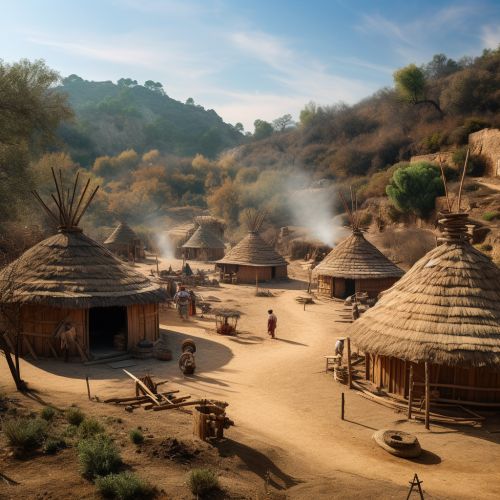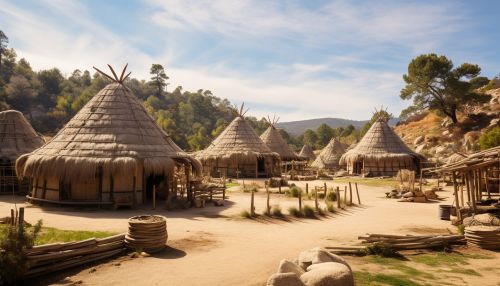Native American tribes in California
Pre-European Contact
Native American tribes in California were diverse in their cultural practices and languages. Prior to European contact, California was home to more than 70 distinct groups of Native Americans, each with its own language and culture. The tribes lived in diverse geographic regions, from the arid desert of the south to the lush forests of the north, and from the coastal regions to the high mountains. The tribes had complex social structures, with societies organized around clans or lineages, and they practiced a variety of subsistence strategies, including hunting, gathering, fishing, and agriculture.


The tribes of California were skilled basket weavers, and their baskets were not only functional, but also works of art. The Chumash, for example, were known for their coiled baskets, which they decorated with intricate designs. The Pomo were also renowned for their basketry, and they used a variety of materials, including willow, sedge, and bulrush.
The tribes also had rich spiritual traditions, with belief systems centered around nature and the environment. The Miwok, for example, believed in a creator who made the world and all living things, and they held ceremonies to honor the spirits of nature.
European Contact and Colonization
The first European contact with the Native American tribes in California was made by Spanish explorers in the 16th century. The Spanish established missions along the California coast, and they attempted to convert the Native Americans to Christianity. The mission system had a devastating impact on the Native American tribes, as they were subjected to forced labor, disease, and cultural assimilation.
The Russian Empire also established a presence in California in the early 19th century, with the establishment of Fort Ross in 1812. The Russians engaged in trade with the Native American tribes, particularly the Pomo and the Kashaya, and they also recruited Native Americans to work at the fort.
The United States acquired California from Mexico in 1848, following the Mexican-American War. The discovery of gold in California in the same year led to a massive influx of settlers, and the Native American tribes were further displaced from their lands. The California Gold Rush was a period of intense conflict and violence, with many Native Americans being killed or forced into slavery.
Modern Era
In the 20th century, the Native American tribes in California began to assert their rights and fight for recognition. The Indian Reorganization Act of 1934 provided for the establishment of tribal governments, and many tribes in California took advantage of this legislation to establish their own governments and manage their own affairs.
Today, there are more than 100 federally recognized tribes in California, and they continue to maintain their cultural traditions and practices. The tribes are involved in a variety of economic activities, including gaming, tourism, and agriculture, and they contribute significantly to the economy of the state.
